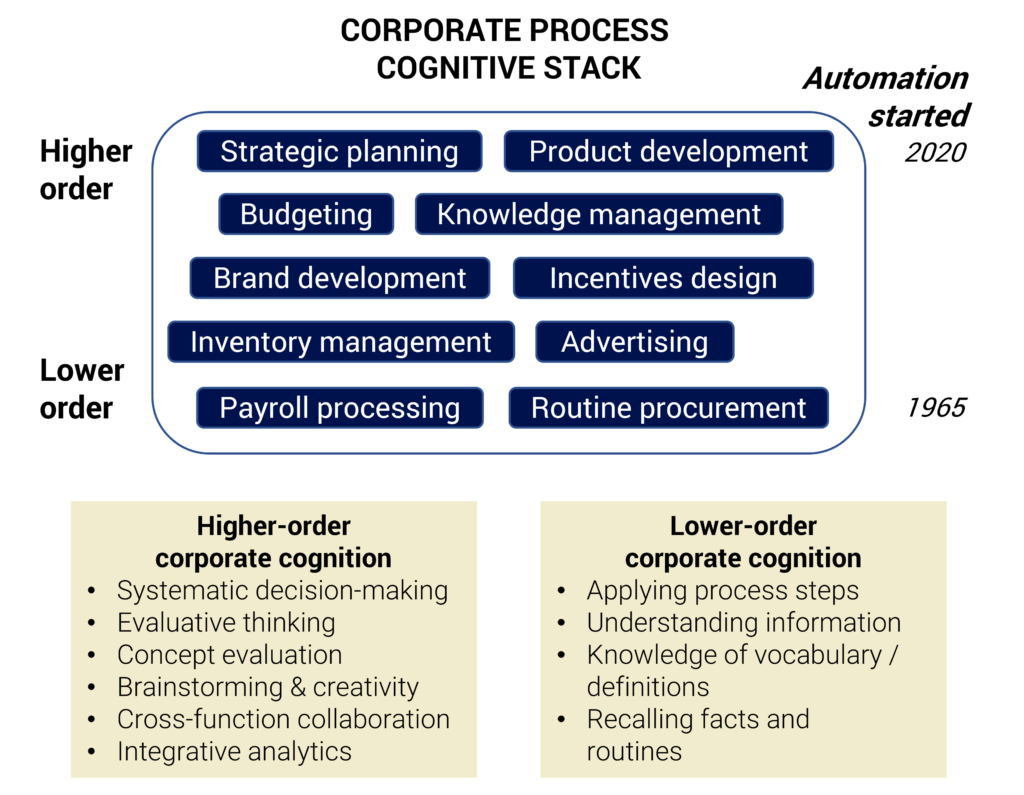The Corporate Cognitive Stack
- 2022-09-01
- 11:58 am
- Posted By: Tellusant

Tellusant’s focus is on streamlining corporate higher-order cognitive processes.
That is, we not only deliver the insights, we also do it efficiently and as cloud serve-service apps with no consultants required (in many cases).
So what do we mean by higher-order cognitive processes?
The graph below shows the level of cognitive reasoning required for various processes. It is inspired by a discussion with business school professor and start up advisor with a PhD in psychology: Daniel Isenberg.
 He mentioned that he sees more and more examples of automation being applied in higher-order cognitive processes at large companies.
He mentioned that he sees more and more examples of automation being applied in higher-order cognitive processes at large companies.
We give the highest importance to cross-functional collaboration, evaluative thinking, analytical integration (across knowledge domains). The characteristics of higher- and lower-order reasoning are from academic literature.
To learn more, contact us by filling out this online form.
Usage terms: CC BY-NC-ND 4.0
Within TelluPlan's suite of products, StrategyAI, PACE, and PoluSim aim at the higher order levels of processes. QuantRisk and Fox are mid-level products.